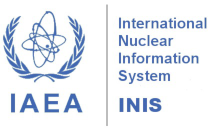New article published: V. 13 n. 3 (2025)
In vivo monitoring in radiological or nuclear emergencies: a program for intercomparison of detection efficiency in NaI(Tl) portable detectors
Abstract: In vivo internal monitoring is a laboratory technique used to assess and quantify the incorporation of radionuclides in the human body. Demand for such services may increase significantly in a radiological or nuclear emergency. In addition to dedicated laboratories, researchers have proposed the calibration of portable gamma radiation detectors to carry out a rapid screening of exposed individuals and assess internal dosimetry. Several international intercomparison exercises have been conducted to evaluate the performance of detectors specifically designed for internal monitoring, including, more recently, NaI(Tl) portable detectors. However, these experimental intercomparison exercises have included the transport of radioactive sources between participating institutions. The aim of this study is to propose a simple methodology for determining a reference value for the NaI(Tl) detector efficiency at 662 keV (137Cs), supporting future exercise efforts. This work employed NaI(Tl) scintillator detectors and a torso phantom. It was possible to determine an optimized measurement geometry through simulation using the MCNPX mathematical code, especially regarding the distances, and to estimate efficiency values with defined acceptance intervals for the proposed intercomparison exercise. However, additional experiments are needed to define these intervals more precisely. Complementarily, the minimum detectable effective doses were approximately 60 µSv and 38 µSv for the NaI(Tl) 2’’×2’’ and 3’’×1.5’’ detectors, respectively. Read full article.






















